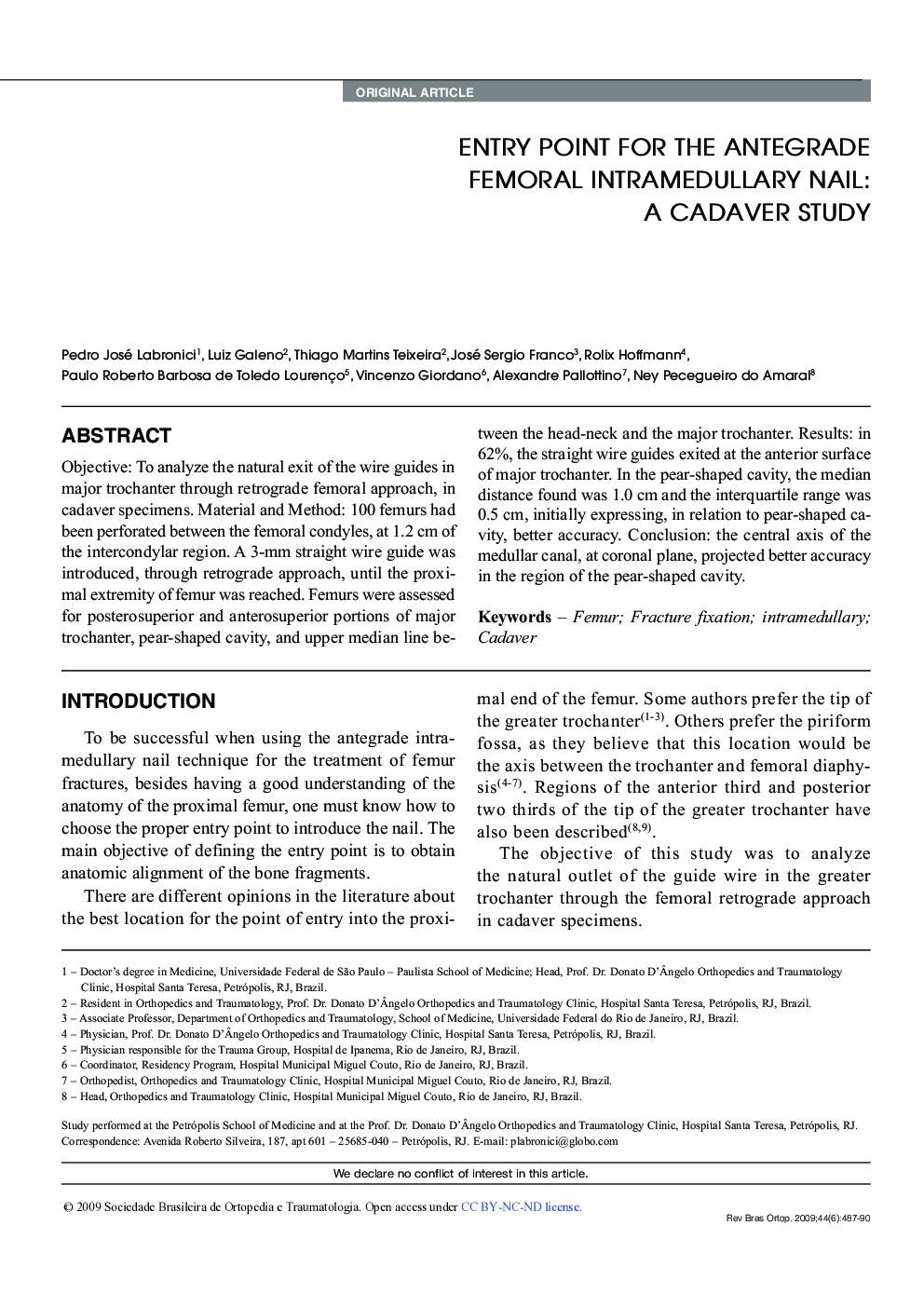| Article ID | Journal | Published Year | Pages | File Type |
|---|---|---|---|---|
| 2708677 | Revista Brasileira de Ortopedia (English Edition) | 2009 | 4 Pages |
ABSTRACTObjective: To analyze the natural exit of the wire guides in major trochanter through retrograde femoral approach, in cadaver specimens. Material and Method: 100 femurs had been perforated between the femoral condyles, at 1.2 cm of the intercondylar region. A 3-mm straight wire guide was introduced, through retrograde approach, until the proximal extremity of femur was reached. Femurs were assessed for posterosuperior and anterosuperior portions of major trochanter, pear-shaped cavity, and upper median line between the head-neck and the major trochanter. Results: in 62%, the straight wire guides exited at the anterior surface of major trochanter. In the pear-shaped cavity, the median distance found was 1.0 cm and the interquartile range was 0.5 cm, initially expressing, in relation to pear-shaped cavity, better accuracy. Conclusion: the central axis of the medullar canal, at coronal plane, projected better accuracy in the region of the pear-shaped cavity.
